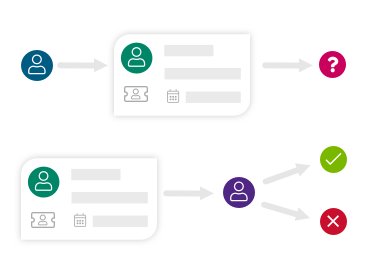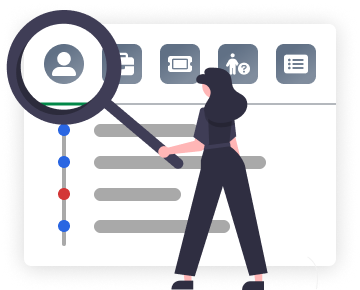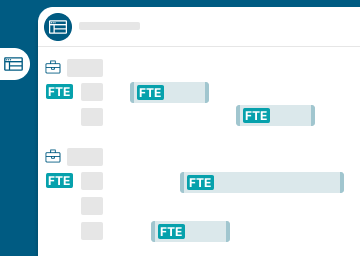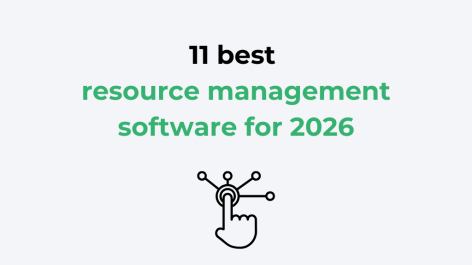Professional services firms plan against a complex set of criteria. Availability matters, but so does certifications, client expectations, niche expertise, and team dynamics. After all, resource planning decisions reflect how the firm delivers work, manages risk, and builds credibility with clients.
To unpack what that looks like in practice, we spoke to Kathleen Fitzgerald at Linked Workforce. Having worked with professional services firms across Audit, Tax, and Advisory, she’s seen first-hand what gets in the way of effective planning and what the best firms do differently.
This blog explores how Retain Cloud helps firms plan around those realities, supporting better decisions, stronger teams, and more consistent delivery across Audit, Tax, and Advisory.
Why resourcing in professional services is uniquely complex

In professional services every engagement depends on assembling a team with the right mix of expertise, certifications, and project experience, often under tight timelines and changing priorities. The margin for error is narrow, and expectations are high.
“Resource planning is about aligning individual expertise with project needs and client expectations—often in real time,” says Kathleen. “You’re not planning around materials or fixed workflows. You’re planning around people.”
In her work with professional services firms, Kathleen regularly sees the same pain points slow teams down:
● Limited visibility: It’s difficult to see who’s available, what they’re skilled in, and what their current workload looks like.
● Forecasting gaps: Uncertainty around project pipelines makes it hard to plan ahead or avoid peaks and troughs in capacity.
● Tension between billability and development: Firms want to maximise utilisation, but also invest in growth. (But the two often pull in opposite directions.)
● Frequent project changes: Timelines shift. Requirements change. Without flexible tools, even small adjustments cause disruption.
● Disconnected teams: Sales, project leads, and resource managers often work from different systems or priorities, making alignment harder than it should be.
Each department (Audit, Advisory, Tax) brings its own set of constraints and cycles. When those aren’t coordinated, resourcing becomes reactive and inconsistent. And that affects everything from delivery timelines to employee engagement.
Compliance, certifications, and the need for precision

Similarly, project requirements in professional services often come with strict conditions. Some roles demand regulatory qualifications. Others need specific technical experience, or a proven track record with similar clients. Firms are expected to demonstrate this capability, sometimes before work even begins.
“Most businesses try to keep on top of certifications with a mix of internal systems and manual checks,” says Kathleen. “There might be a database, some spreadsheet tracking, and a process for checking things manually when it matters most.”
This patchwork approach can hold up decisions. Certification records are often buried in HR systems, disconnected from project planning or resource scheduling tools. As a result, managers spend time chasing information, duplicating checks, or relying on outdated data.
It’s a significant operational risk. According to Drata, 87% of organisations report negative outcomes when compliance is managed reactively, ranging from audit failures to lost business opportunities. And for 41%, poor compliance visibility slows down the sales cycle itself.
Kathleen points to three issues that come up repeatedly:
#1. Qualification data is hard to access at the point of planning.
#2. Manual checks slow things down and introduce risk.
#3. Teams don’t have a joined-up view of capability across the business.
“A centralised system, like Retain, gives you the full picture,” she explains. “You can plan faster, act with more confidence, and stay ahead of compliance requirements without creating extra admin.”
With better visibility, firms can spot where certifications are running low, where upskilling is needed, and where client expectations might soon outpace internal capacity.
Why skills need to sit at the centre of planning

Skills have become the organising principle for modern resource planning. They shape how projects are staffed, how teams are balanced, and how firms respond to client needs. But for many professional services firms, skills data is still fragmented or underused.
The consequences of poor visibility are well documented. 70% of corporate leaders report that critical skills gaps are holding back business performance.
“There’s a clear shift happening,” says Kathleen. “Firms are starting to break projects down into specific capability requirements and staff accordingly—not based on job titles, but on what people can actually do.”
That level of precision depends on having a consistent way to define and track skills across the business. Without it, resource managers are left working from incomplete information, and the same few people get overbooked because they’re the only ones whose strengths are visible.
Kathleen sees the impact of poor skills visibility all the time:
● Teams are assembled based on familiarity, not suitability.
● Niche capabilities sit underutilised because they’re hard to surface.
● The same skill might be described five different ways in different departments, making searches unreliable.
“A standardised skills taxonomy makes everything easier,” she explains. “It gives you a common language across Audit, Tax, and Advisory—and allows you to plan based on real capability, not assumptions.”
When skills data is structured, current, and connected to project work, planning becomes more strategic and effective. Firms can search for combinations of technical expertise and behavioural strengths. They can see how recently someone’s used a skill, or whether it’s backed by verified experience. And they can build teams with confidence, knowing exactly why each person is there.
Building capability through the work itself

Project delivery and employee development are often treated as separate processes. But in practice, most skills are built on the job. The question is whether firms are set up to recognise that and plan around it.
“Employee development is a core part of resource planning,” says Kathleen Fitzgerald. “It’s how firms prepare for the skills they’ll need next, not just the work that’s on the desk today.”
Formal training still plays a role, but it’s only part of the picture. The majority of development happens through real assignments by working on client engagements, stretching into new areas, and building confidence in context. That type of learning is harder to track, but it’s also where the most valuable growth tends to happen.
Kathleen points out where most firms fall short:
● There’s no standard way to record skills gained through project work.
● Feedback is focused on delivery, not development.
● The connection between project history and progression planning is rarely visible to HR or resource teams.
“The systems don’t talk to each other,” she explains. “So even when someone’s growing, it’s not always recognised. That leads to missed opportunities and frustration for both the business and the individual.”
The retention impact is real. Gallup found that organisations investing in employee development are twice as likely to retain their people, and 11% more profitable overall. And according to LinkedIn research, 94% of employees say they would stay longer at a business that invests in their career development.
Better visibility changes the dynamic. When firms can track how people are developing in real time—what they’ve done, where they’re stretching, which skills are being reinforced—they can assign work more intentionally. That supports retention, progression, and overall capability planning without adding more process.
Matching client expectations with the right expertise

Clients want confidence in the team they’re working with. They expect relevant experience, up-to-date knowledge, and the right certifications in place, especially when the work is high-stakes or regulated.
“Firms that do this well have a deep understanding of their talent,” says Kathleen. “They track detailed skills, project history, certifications, and availability—so when a client asks for something specific, they know exactly who to put forward.”
It’s also about demonstrating credibility and showing clients that the team has real-world experience in similar environments. That level of assurance helps win work and build trust.
Kathleen outlines the key practices she sees in firms that consistently staff well:
✔️ Strong internal data on skills and past projects.
✔️ Dedicated resource teams using tools that match people to requirements with precision.
✔️ Clear communication between client-facing teams and those doing the staffing.
✔️ A culture of development, so specialist knowledge is actively grown—not just searched for.
✔️ Continuous feedback to refine how people are assigned, based on performance and outcomes.
As client expectations rise, these processes matter more. Visibility into capability, planning logic, and project outcomes allows firms to respond faster, make better staffing decisions, and maintain consistency at scale.
Planning only works when the systems connect
Even the best resource plan falls apart if it can’t connect to the systems firms use every day. For professional services, that means aligning planning tools with financial tracking, project management, CRM, HR, and compliance workflows—without creating more admin.
“Project codes tend to be the link,” says Kathleen Fitzgerald. “Time and costs are logged against those codes, and the best systems use them to bridge planning and financial tracking. But integration is still a challenge for a lot of firms.”
Disconnected systems lead to duplication, delays, and gaps in reporting. While some platforms are making integration easier, many firms still operate with partial visibility across functions.
That’s why choosing the right tool is so important. Retain Cloud is designed to integrate directly with platforms like Microsoft Dynamics, SAP, IRIS, Office 365, and Salesforce—so project, resource, and performance data flow through without disruption. That reduces the need for reconciliation and gives leadership a shared view of what’s happening across the business.
But integration alone isn’t enough. “To be usable across departments, a platform needs more than just technical connectivity,” says Kathleen. “It has to reflect how teams actually work—whether that’s Audit, Tax, or Advisory—and provide views and workflows that feel natural.”
Role-based dashboards, contextual filters, and permissioned access make it easier for teams to adopt a shared system, without compromising how they operate day to day.
What professional services firms need from a resource planning platform

As we’ve seen, professional services firms need the right tool. A platform that understands how they operate, adapts to their complexity, and supports better decisions at every level.
“Look for a system that goes beyond scheduling,” says Kathleen Fitzgerald. “You want something that matches people to work based on real skills, gives you visibility across the business, and fits into the systems you already use.”
In her view, the most effective platforms share a few key characteristics:
● Skills-focused matching that reflects both technical capability and relevant experience.
● Live visibility into capacity, demand, and workload across departments.
● Integration with project, HR, and finance systems to create a single source of truth.
● Support for growth, through development tracking and stretch assignment planning.
● Role-specific usability, so teams in Audit, Tax, and Advisory can all work in ways that make sense to them.
● Scalability, to grow with the business and adjust to changing resourcing models.
This is where platforms like Retain Cloud are resonating. “They’re solving the problems that matter,” Kathleen adds. “They help firms make better use of their people, build the skills they need, and stay ahead of increasingly complex client and compliance demands.”
Resourcing decisions that stand up to real-world demands
Professional services firms operate in an environment where the margin for error is slim. Success relies on capability, compliance, and clarity across every part of the planning process.
What firms need is a platform that brings those elements together. One that understands the skills their people bring, the standards their clients expect, and the operational reality of working across Audit, Tax, and Advisory.
That’s what Retain Cloud was built to do.
Whether you're building specialist teams, balancing utilisation, or investing in future capability, Retain helps you do it with accuracy, consistency, and scale.
➡️ Book a demo to find out more.


